MarTech SaaS companies often face a critical decision when planning their marketing strategies: Should you invest in SEO for long-term growth or opt for paid ads to drive immediate visibility?
It’s not an easy choice—both strategies have their strengths, but choosing the wrong one could mean wasted resources, missed opportunities, and an underwhelming ROI.
This blog will break down the pros and cons of SEO and paid ads, offer a custom framework to help you decide which approach suits your goals, and provide actionable insights to maximize your marketing impact.
By the end, you’ll know exactly how to balance these strategies and build a sustainable growth engine for your MarTech SaaS business.
Let’s dive in!
Table of Contents
Understanding SEO and Paid Ads
What is SEO?
Search Engine Optimization (SEO) is the process of improving your website’s visibility on search engines like Google. The goal is to rank higher for relevant keywords your audience is searching for, driving organic traffic to your site.
For MarTech SaaS companies, SEO is a powerful tool for building long-term authority. When executed well, it creates a steady flow of high-quality leads without the need for constant spending.
Key Benefits of SEO for MarTech SaaS:
- Compounding ROI: SEO is an investment that pays off over time, unlike paid ads, which stop generating traffic once you pause the campaign.
- Credibility & Trust: Organic results are often viewed as more trustworthy by potential customers.
- Sustainable Growth: An optimized website can generate traffic for years with minimal ongoing investment.
Example: See how Derivate X helped Kroto, a professional how-to videos martech SaaS product went from 2000 to 54,000 impressions on Google in just 2 months. Read the case study here!
What are Paid Ads?
Paid Ads, often referred to as Pay-Per-Click (PPC) advertising, involve paying to display your business at the top of search results or on social media platforms. Unlike SEO, paid ads deliver instant visibility to your target audience.
For MarTech SaaS companies, paid ads are especially effective for:
- Launching new products.
- Running time-sensitive campaigns.
- Gaining quick traction in competitive markets.
Key Benefits of Paid Ads for MarTech SaaS:
- Immediate Results: Paid ads can generate traffic and leads as soon as the campaign goes live.
- Precise Targeting: Platforms like Google Ads and LinkedIn allow you to target specific demographics, job roles, and industries.
- Flexibility: You can test different messages, offers, and audiences quickly.
Key Factors to Consider
Budget
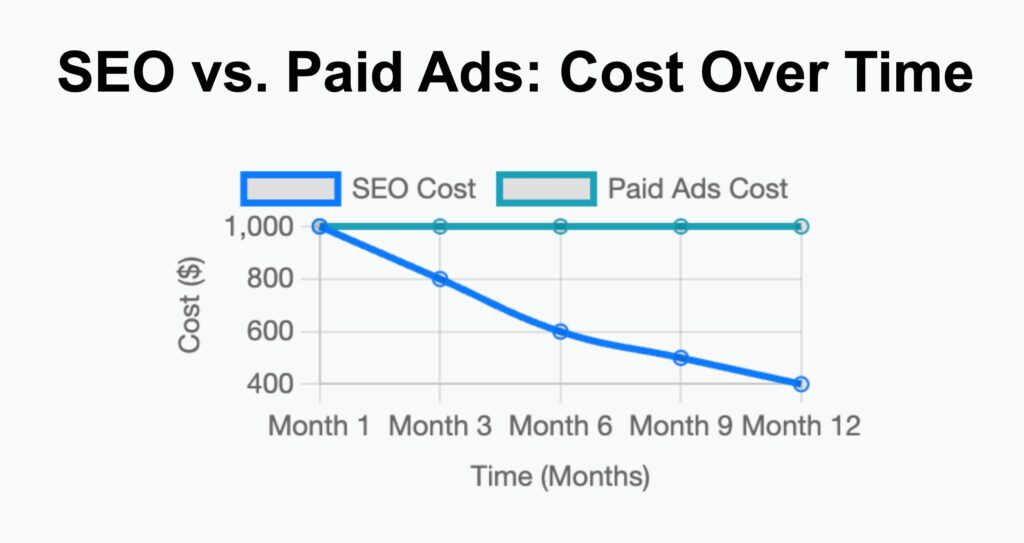
One of the most significant considerations when choosing between SEO and paid ads is your budget. Both strategies require investment, but they differ in how and when the costs are incurred.
- SEO: Requires an upfront investment in content creation, optimization, and technical improvements. However, once your website starts ranking, the traffic and leads you generate can be highly cost-effective over time.
- Paid Ads: These operate on a pay-to-play model, meaning you pay every time someone clicks on your ad. While this offers immediate visibility, the costs can add up quickly, especially in competitive industries.
Pro Tip: If your budget is tight, consider starting with a small PPC campaign to generate quick leads while investing in SEO for long-term growth.
For SaaS companies with tight budgets, start with PPC for quick traction, but don’t ignore SEO—it’s an investment that pays off exponentially in the long run.
Emma Davis, Founder of SaaS Marketers Pro
Timeline
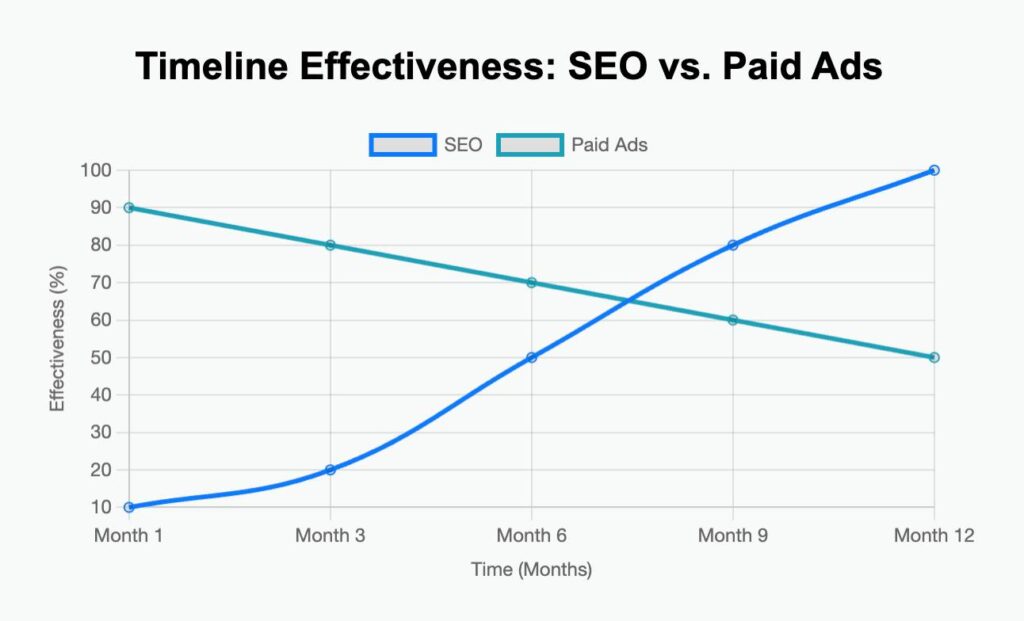
Your marketing timeline is another critical factor. Do you need immediate results, or can you wait for long-term gains?
- SEO: It typically takes 4–6 months to start seeing significant results, making it a better option for companies with a long-term focus.
- Paid Ads: These deliver instant visibility and traffic, making them perfect for time-sensitive campaigns like product launches or end-of-quarter promotions.
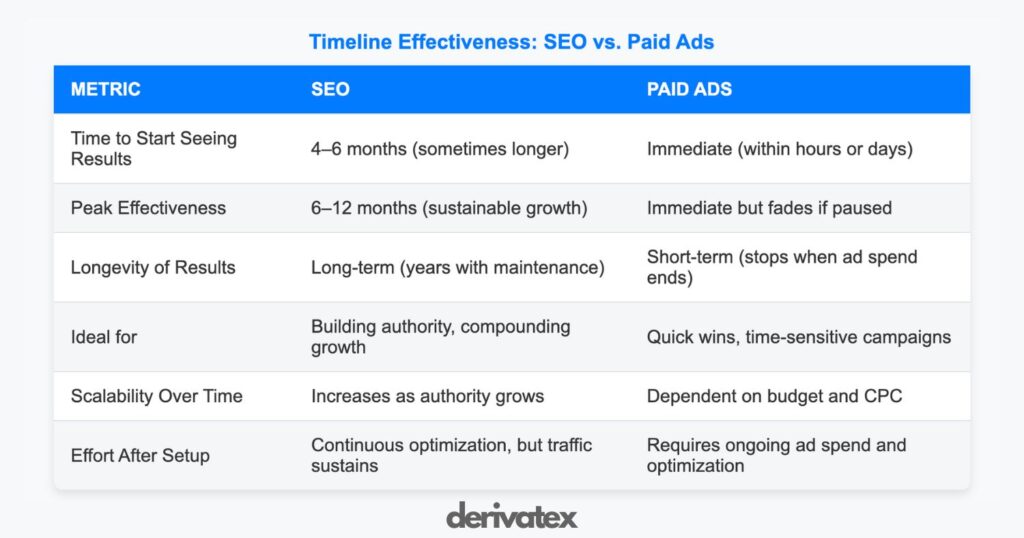
Market Competition
The level of competition in your market often determines how effective each strategy will be.
- SEO: Works best in low-to-medium competition markets or for niche keywords where ranking is achievable with the right strategy.
- Paid Ads: In highly competitive markets (e.g., for “MarTech SaaS tools”), PPC can help you gain visibility where SEO rankings might take too long to achieve.
Case Insight: In competitive markets, combining both SEO and PPC can help you dominate high-priority keywords faster.
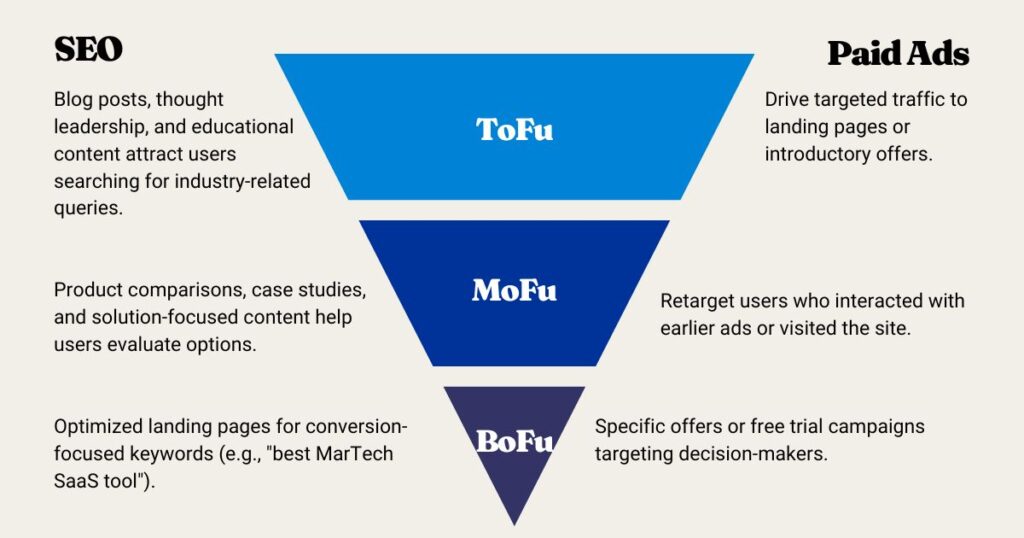
Target Audience Behavior
Understanding where your audience spends their time is key to selecting the right strategy.
- SEO: Ideal for audiences actively searching for solutions, such as marketers looking for “top marketing automation platforms.”
- Paid Ads: Better for reaching highly targeted audiences, such as marketing decision-makers on platforms like LinkedIn.
Data Insight: Research shows that 70% of SaaS buyers research solutions via Google search before contacting a vendor. Use this to your advantage by combining SEO and paid ads.
SEO provides the highest ROI in the long term, but PPC dominates when you need fast results or are entering a competitive market.
Alex Johnson, Digital Marketing Expert
The Custom Framework: How to Decide Between SEO and Paid Ads
Making the right choice between SEO and paid ads can feel overwhelming. That’s why we’ve developed the G.O.A.L Framework—a simple, actionable approach to help MarTech SaaS companies determine the best strategy for their specific needs.
The G.O.A.L Framework
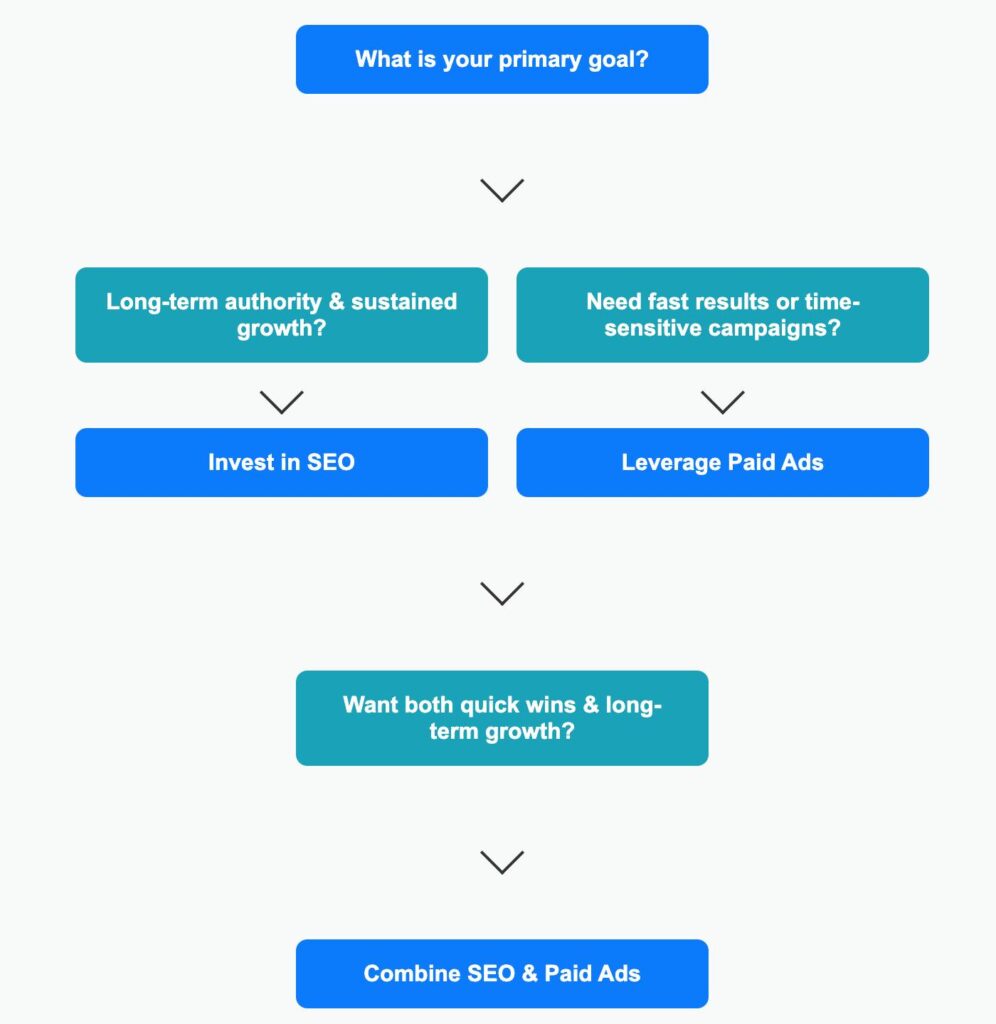
G: Goals
Start by defining your primary marketing objectives.
- If your goal is long-term authority and sustained growth, SEO is the way to go.
- If you need immediate leads or visibility for a product launch, paid ads are the better choice.
Example: A MarTech SaaS company launching a new feature might use PPC for instant visibility while building long-term SEO around related educational content.
O: Opportunity
Analyze keyword and market opportunities.
- High competition keywords: Use PPC to gain immediate traction while working on SEO to build organic rankings over time.
- Low competition keywords: Invest in SEO to dominate niches and drive sustainable traffic.
Pro Tip: Use tools like SEMrush or Ahrefs to identify which keywords are worth targeting for SEO versus PPC.
Also read: Best Tools for SEO for B2B: Top Platforms & Solutions
A: Audience
Understand your audience’s behavior and platform preferences.
- SEO: Target users actively searching for solutions on Google. For example, “best email marketing software” might attract potential buyers early in their research phase.
- Paid Ads: Focus on reaching decision-makers on platforms like LinkedIn, where precise targeting is possible.
Example Insight: If your audience includes senior marketing executives, LinkedIn Ads can deliver targeted results faster than relying solely on organic search.
L: Leverage
Evaluate your resources and team capabilities.
- SEO: Requires expertise in content creation, keyword optimization, and technical improvements. Works well for companies with in-house or agency SEO support.
- Paid Ads: Needs consistent funding and expertise in ad management. A good option for companies with dedicated marketing budgets and a team to monitor ad performance.
Tip: If you have a lean team, consider outsourcing SEO or PPC management to experts to maximize ROI.
Also read:
- What Does an SEO Strategist Do? Everything You Need to Know
- How to Fire an SEO Company: A Step-by-Step Guide to Part Ways Professionally
Practical Scenarios Using the G.O.A.L Framework
- Scenario 1:
- Situation: You’ve just launched a new product and need visibility fast.
- Solution: Use paid ads for immediate exposure and lead generation while developing SEO content around the product’s value proposition.
- Scenario 2:
- Situation: You want to reduce customer acquisition costs (CAC) and build a long-term growth engine.
- Solution: Focus on SEO by optimizing your website and creating content around high-intent keywords.
- Scenario 3:
- Situation: Your competition dominates SERPs for high-value keywords.
- Solution: Combine SEO and paid ads to build visibility while gradually replacing paid traffic with organic rankings.
“SEO is like planting a tree. It takes time, but once it grows, it provides fruits for years. Paid ads are like buying those fruits—they’re fast but don’t last forever.”
John Smith, SEO Strategist at SaaS Growth Hub
Pros and Cons of SEO vs. Paid Ads
SEO Pros and Cons
Pros of SEO:
- Cost-effective long-term: After the initial investment, the cost per lead decreases significantly, making it one of the most sustainable strategies.
- Credibility and trust: Organic search results are perceived as more reliable by users.
- Compounding ROI: As your rankings improve, your traffic and leads grow without increasing ongoing costs.
- High-quality leads: SEO attracts users actively searching for solutions, resulting in more qualified traffic.
Cons of SEO:
- Time-intensive: SEO typically takes 4–6 months to show meaningful results, making it unsuitable for immediate goals.
- Requires expertise: Success depends on a well-executed strategy, including technical SEO, content creation, and link-building.
- Algorithm dependence: Changes in search engine algorithms can impact rankings, requiring continuous monitoring and optimization.
Paid Ads Pros and Cons
Pros of Paid Ads:
- Immediate results: Ads can start generating traffic and leads as soon as your campaign goes live.
- Precise targeting: Platforms like Google Ads and LinkedIn let you target specific demographics, job titles, or behaviors.
- Scalability: Campaigns can be scaled quickly to increase reach and conversions.
- Control over messaging: You can test and refine your messaging and offers in real-time.
Cons of Paid Ads:
- High ongoing costs: Once you stop paying, the traffic and leads stop as well.
- Competitive markets are expensive: In high-demand industries, CPC (cost-per-click) can be prohibitively high.
- Ad fatigue: Audiences can become desensitized to your ads over time, reducing effectiveness.
- Limited lifespan: Paid campaigns are only as effective as your budget allows, offering no compounding benefits like SEO.

Which Is Right for You?
- If you’re aiming for long-term, sustainable growth and brand authority, SEO is your best bet.
- If you need fast results or are operating in a highly competitive space, Paid Ads will deliver quicker outcomes.
Pro Tip: Combining SEO and paid ads can help balance the pros and cons of both strategies, giving you the best of both worlds.
When to Use SEO, Paid Ads, or Both
Scenarios Favoring SEO
- Building Long-Term Authority:
- If you want to dominate SERPs for industry-relevant keywords and reduce customer acquisition costs (CAC) over time, SEO is the way to go.
- Example: Targeting keywords like “top marketing automation tools” or “MarTech SaaS solutions” can establish you as a thought leader in the industry.
- Attracting High-Quality Organic Leads:
- SEO works well when your audience actively searches for solutions. Educational content like blogs, guides, and case studies attract potential buyers who are further down the funnel.
- Maximizing ROI Over Time:
- Once established, SEO generates ongoing traffic and leads without the need for continuous spend, making it cost-effective in the long run.
Scenarios Favoring Paid Ads
- Quick Wins for Product Launches:
- If you’re introducing a new product or feature and need fast visibility, paid ads are ideal. They ensure your offer reaches the right audience immediately.
- Targeting Niche Audiences:
- Platforms like LinkedIn Ads allow precise targeting of specific job titles, industries, or demographics. For instance, running ads to reach CMOs or marketing managers can accelerate lead generation.
- Seasonal or Time-Sensitive Campaigns:
- Paid ads are perfect for campaigns with tight deadlines, such as end-of-quarter promotions or limited-time offers.
Best Practices for Combining Both
- Leverage PPC for Quick Traction:
- Use paid ads to promote new SEO content, ensuring it gains visibility while your organic rankings build.
- Dominate SERPs with Dual Strategies:
- Combine SEO and PPC to appear in both organic and paid results for high-value keywords. This increases your credibility and click-through rate (CTR).
- Build a Long-Term Growth Engine:
- Run paid campaigns to drive leads while simultaneously investing in SEO to secure long-term traffic and reduce dependency on paid ads.
Example Workflow:
- Start with PPC for immediate results while creating optimized blog posts and landing pages.
- Gradually reduce PPC spending as organic traffic grows, reinvesting savings into scaling SEO efforts.
The best MarTech strategies combine SEO for organic authority with paid ads for immediate visibility. Together, they create a sustainable growth engine.
Jane Doe, Head of Growth at SaaSify
FAQs
Is SEO better than paid advertising?
It depends on your goals and timeline. SEO is ideal for building long-term authority and organic traffic, while paid ads are better for achieving immediate visibility and quick results. A combination often works best.
When should a SaaS company start investing in SEO?
The sooner, the better. SEO takes time to show results, so starting early allows you to build authority and generate sustainable traffic over the long term. Even startups with limited budgets can focus on foundational SEO like technical optimization and keyword research.
How do I calculate ROI for SEO and Paid Ads?
SEO ROI: Measure metrics like organic traffic, conversion rates, and cost per lead (CPL) over time. Since SEO compounds, its ROI increases the longer it runs.
Paid Ads ROI: Use metrics like click-through rate (CTR), cost per click (CPC), and conversions to assess the effectiveness of campaigns. Tools like Google Ads and LinkedIn provide ROI calculations for ad spend.
What’s the best paid ad platform for MarTech SaaS companies?
Google Ads: Ideal for high-intent keywords like “best MarTech tools.”
LinkedIn Ads: Perfect for targeting specific job roles, like CMOs or marketing managers.
Facebook/Instagram Ads: Useful for retargeting campaigns or broader brand awareness.
How long does it take to see results from SEO?
SEO typically takes 4–6 months to show noticeable improvements in rankings and traffic. For highly competitive keywords, it can take 12+ months. This timeline depends on factors like competition, content quality, and your overall SEO strategy.
Can I combine SEO and paid ads for better results?
Yes, combining both can be highly effective. For example:
– Use PPC to promote new content and drive immediate traffic while waiting for SEO rankings to improve.
– Dominate SERPs by appearing in both organic and paid listings for key search terms.
How much should I budget for SEO and paid ads?
SEO: Budget for content creation, technical optimization, and link-building. Costs vary but expect to invest $2,000–$5,000/month for high-quality SEO.
Paid Ads: Costs depend on your CPC and audience targeting. Start with a test budget (e.g., $1,000–$2,000/month) and scale based on results.
What are the top KPIs to track for SEO and Paid Ads?
SEO: Organic traffic, keyword rankings, bounce rates, and conversions.
Paid Ads: CTR, CPC, quality score, and conversion rates.
Are paid ads worth it for a bootstrapped SaaS company?
Paid ads can work well if you have a limited time to generate leads or promote a product. However, for sustained growth on a limited budget, it’s better to focus on building a strong SEO foundation.
How do I decide which keywords to target for SEO vs. Paid Ads?
Use tools like Ahrefs or SEMrush to analyze keyword competition and intent. High-intent keywords with a high CPC are often better for paid ads, while informational or niche keywords work well for SEO.
Conclusion
When it comes to choosing between SEO and paid ads, there’s no one-size-fits-all answer. Both strategies have unique advantages that cater to different goals:
- SEO excels in building long-term authority, reducing customer acquisition costs, and generating sustainable, high-quality leads.
- Paid Ads are unmatched for immediate visibility, precise targeting, and quick results.
For MarTech SaaS companies, the real power lies in finding the right balance. By combining both strategies, you can achieve short-term wins while building a robust, long-term growth engine.
If you’re still unsure about which strategy to prioritize, the G.O.A.L Framework we shared can help you analyze your goals, opportunities, audience behavior, and available resources to make an informed decision.
Ready to take your MarTech SaaS growth to the next level? Let Derivate X help you craft a customized strategy tailored to your business. Book a free consultation today!

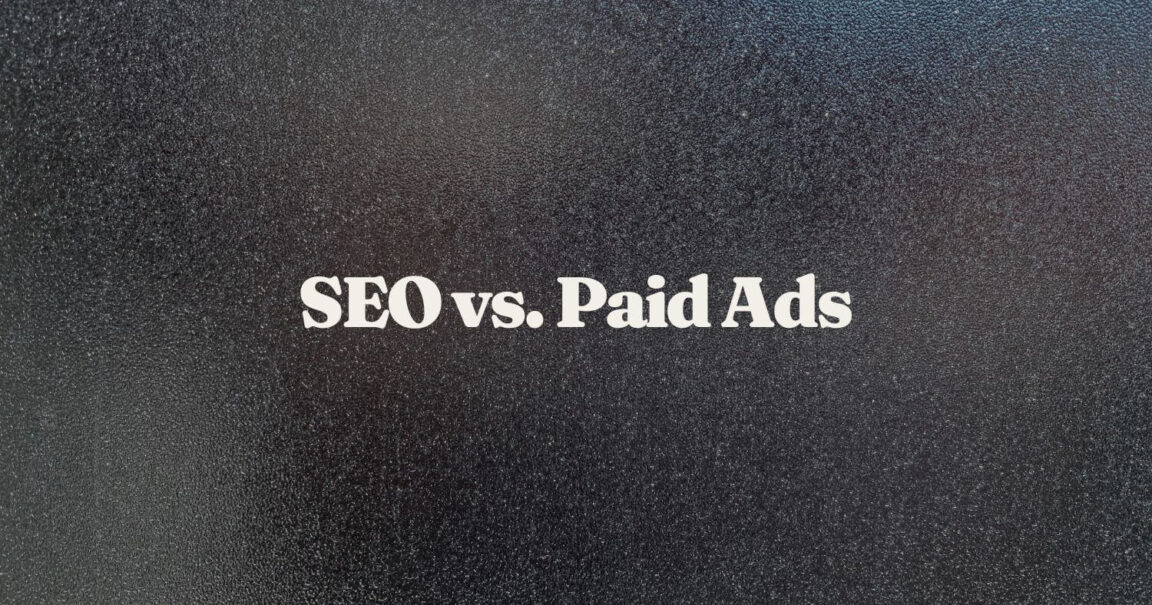
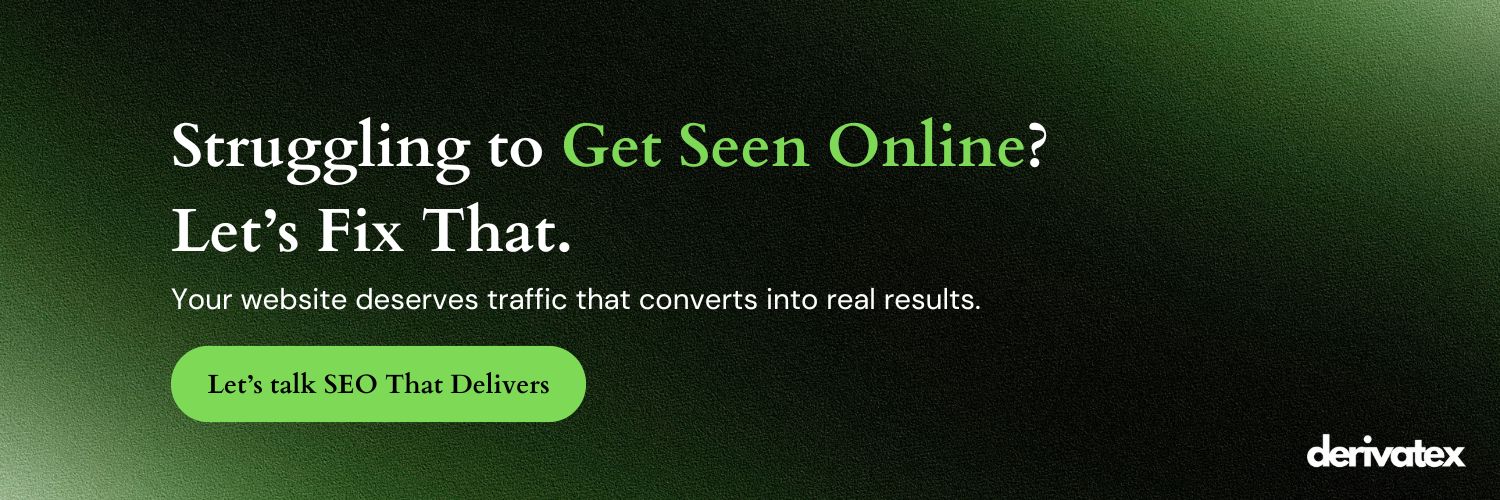
GIPHY App Key not set. Please check settings
2 Comments